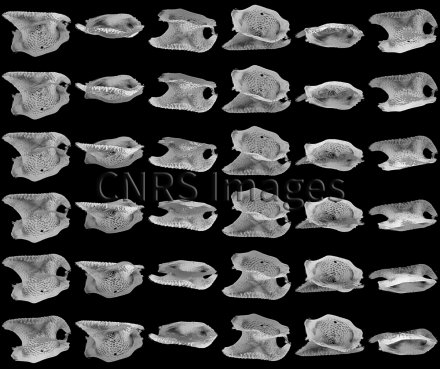Production year
2022

© Marie-Béatrice FOREL / Nathalie POULET-CROVISIER / Lidija KORAT / CR2P / SNBCEI - Ljubljana / CNRS Images
20220122_0017
Ostracods are microscopic crustaceans, most of them no larger than a grain of sand. This specimen of "Havanardia societatis" comes from a lagoon in French Polynesia and has valves with impressive lateral extensions that are specific to this species. It belongs to a major family that has lived for some 500 million years in marine environments ranging from coastal areas to the ocean depths. Fragile yet resilient, ostracods have survived the five mass extinctions that have punctuated the history of life. Using 3D reconstructions, anatomical comparison between present-day and fossil forms helps to characterise and understand them better, making these crustaceans an important tool for studying changes in biodiversity and environments. This image is one of the winners of the 2022 La preuve par l’image (LPPI) photography competition.
The use of media visible on the CNRS Images Platform can be granted on request. Any reproduction or representation is forbidden without prior authorization from CNRS Images (except for resources under Creative Commons license).
No modification of an image may be made without the prior consent of CNRS Images.
No use of an image for advertising purposes or distribution to a third party may be made without the prior agreement of CNRS Images.
For more information, please consult our general conditions
2022
Our work is guided by the way scientists question the world around them and we translate their research into images to help people to understand the world better and to awaken their curiosity and wonderment.